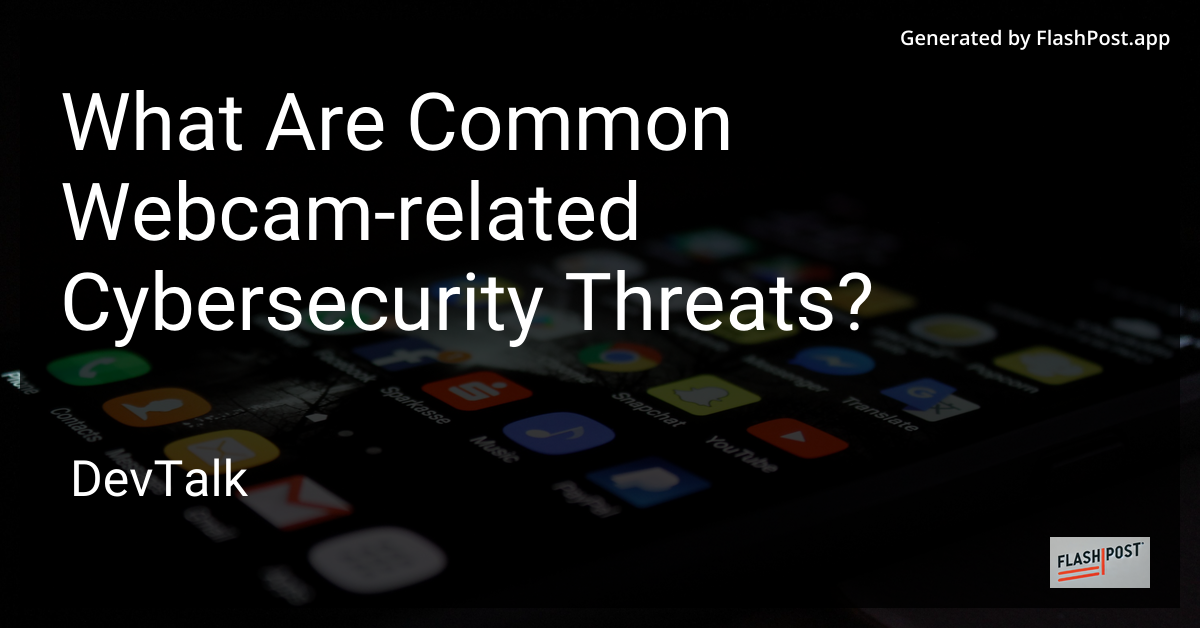What Are Common Webcam-related Cybersecurity Threats?

What Are Common Webcam-Related Cybersecurity Threats?
In the increasingly digital world, webcams have become an essential tool for communication, streaming, and creating content.
However, with their widespread use comes the risk of cybersecurity threats. This article explores the common webcam-related cybersecurity threats and steps you can take to protect yourself from them.
The Rise of Webcam Cyber Attacks
With more people working remotely and using webcams for personal use, the number of potential cybersecurity threats has increased. Hackers target webcams to access sensitive information, invade personal privacy, and even engage in extortion. Below are some common cybersecurity threats associated with webcams:
1. Webcam Hacking
Webcam hacking, also known as camfecting, is one of the most prevalent cybersecurity threats. Cybercriminals can remotely access your webcam to spy on you without your knowledge. This invasion of privacy often results from malware infections, phishing attacks, or exploiting vulnerabilities in webcam software.
2. Malware Attacks
Malware such as Trojans or spyware can be used to gain unauthorized access to your webcam. Once installed, these malicious programs can covertly activate your webcam, record video or audio, and transmit this data to unauthorized third parties.
3. Unsecured Networks
Using webcams on unsecured networks, such as public Wi-Fi, increases the risk of cyber attacks. Hackers can intercept data transmitted over these networks and use it to gain control over connected devices, including webcams.
4. Software Exploits
Vulnerabilities in webcam software or drivers can be exploited by attackers to gain access to your device. Keeping your webcam software updated with the latest security patches is crucial to protecting against these types of threats.
How to Protect Your Webcam from Cybersecurity Threats
-
Keep Software Up-to-Date: Regularly update your operating system, webcam drivers, and security software to patch any vulnerabilities.
-
Use Strong Passwords: Ensure your device and network passwords are robust and unique to prevent unauthorized access.
-
Install Firewall and Anti-Virus Programs: Use reliable security software to detect and block malware and other potential threats.
-
Disable Your Webcam When Not in Use: Physically cover your webcam or disable it in your settings to prevent unauthorized access.
-
Beware of Phishing Scams: Be cautious of unsolicited emails or messages asking you to download software or provide personal information.
Future Innovations in Webcam Security
As technology evolves, webcams are expected to come with advanced security features. If you're interested in what to look for in a webcam in the future, check out the features you should look for in a webcam in 2025.
Choosing the Right Webcam
Investing in a quality webcam that fits your needs is essential. Whether you're looking for budget-friendly options or advanced features for streaming, explore these guides for more information:
- Discover the best budget webcams in 2023.
- Learn about finding the best webcam for streaming.
Conclusion
Understanding the common cybersecurity threats associated with webcams is crucial for safeguarding your privacy and data. By adopting preventive measures and staying informed, you can enjoy the benefits of webcams without compromising your security. Stay vigilant and make informed choices to keep your digital life secure.
This article provides a comprehensive overview of common webcam-related cybersecurity threats and offers strategies to protect yourself. It also includes links to related content for further reading on webcam features and choices.